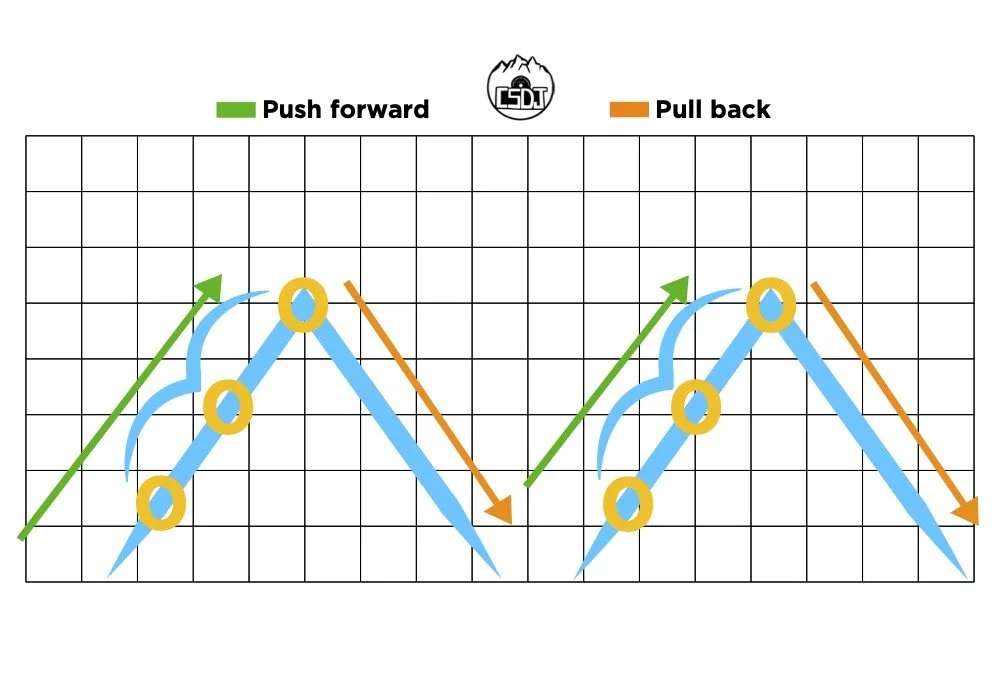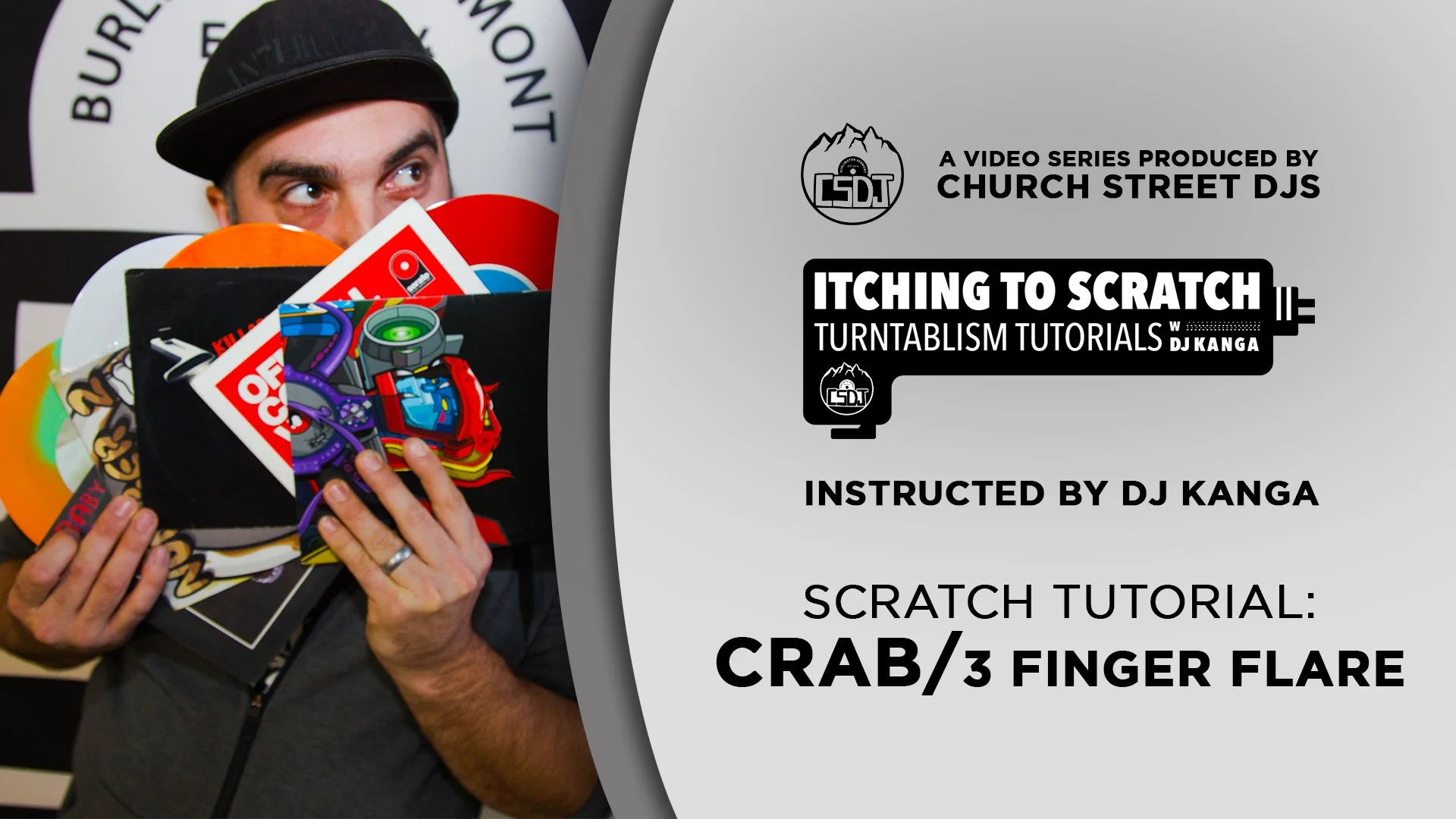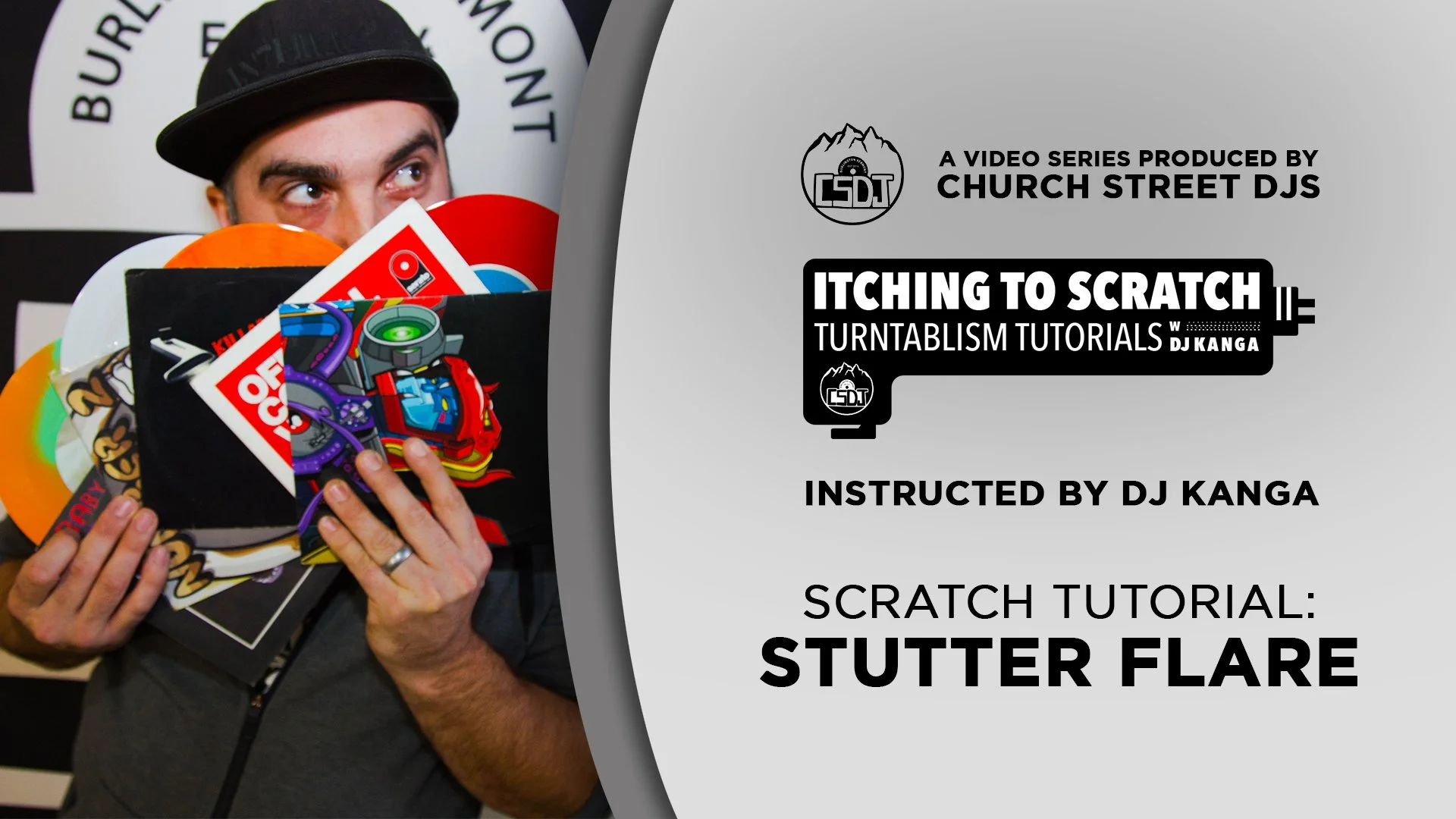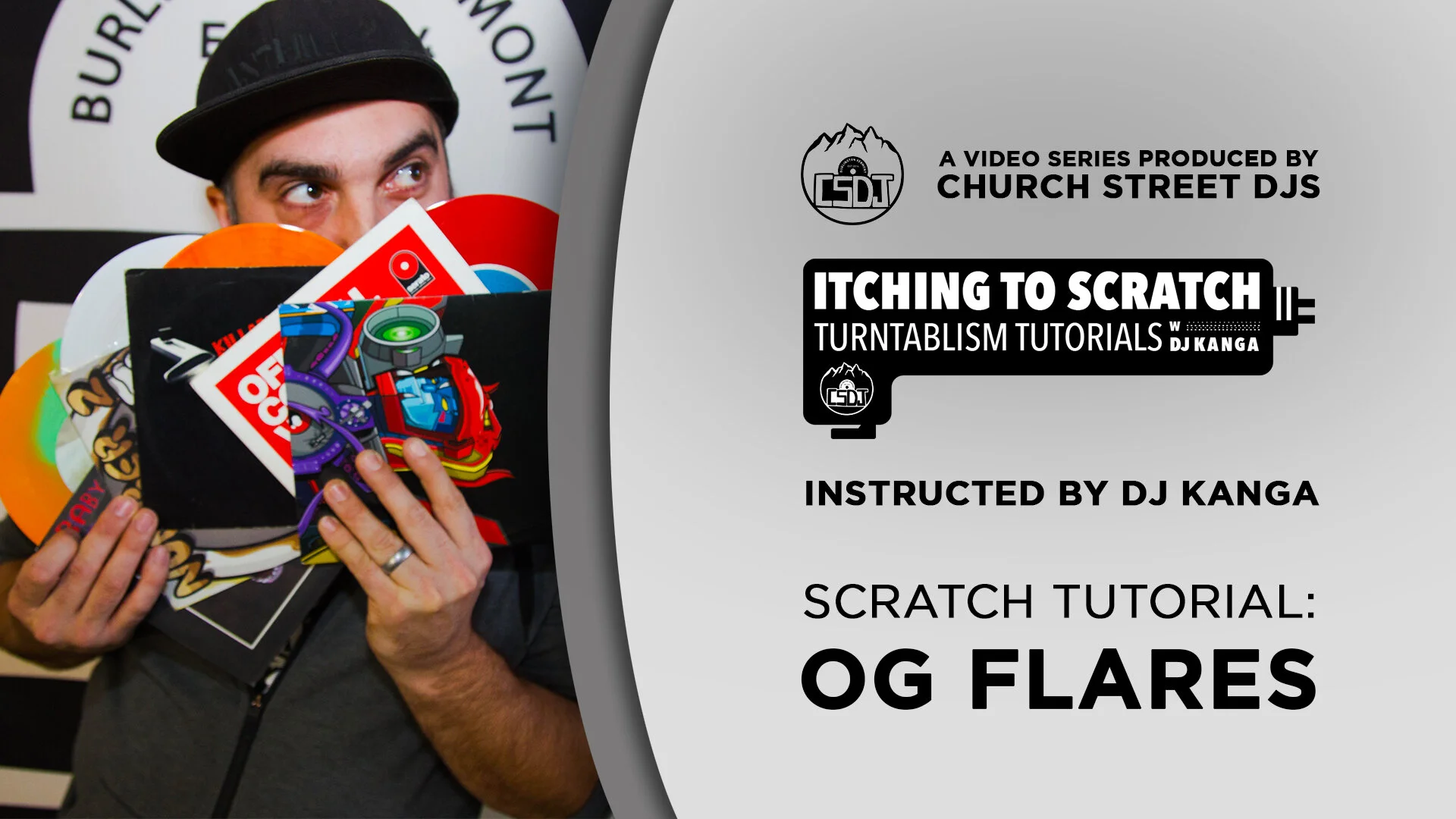Scratch Overview
California rolls are crab flares performed over short-release babies or drills. They create a faster effect, but with fewer notes. Try mixing them in with regular crab flares to add some variation to the scratch!
Center Fader Position: Open-Closed-Open
Scratch Notations: The BOTTOM of the graph (where the blue line begins) is the start of the scratch sample. The TOP of the graph (where the blue line peaks) is the end of the scratch sample. PUSH the record FORWARD from BOTTOM to TOP and PULL the record BACK from TOP to BOTTOM. The distance from LEFT to RIGHT of the graph is the speed of how fast you move the record.












The Tug Flare adds two extra notes to a two-click flare by adding an extra push and pull at the beginning and end of the sound, respectively. The trick to getting the correct sound is actually starting with the first pull back and lead into a two-click flare.